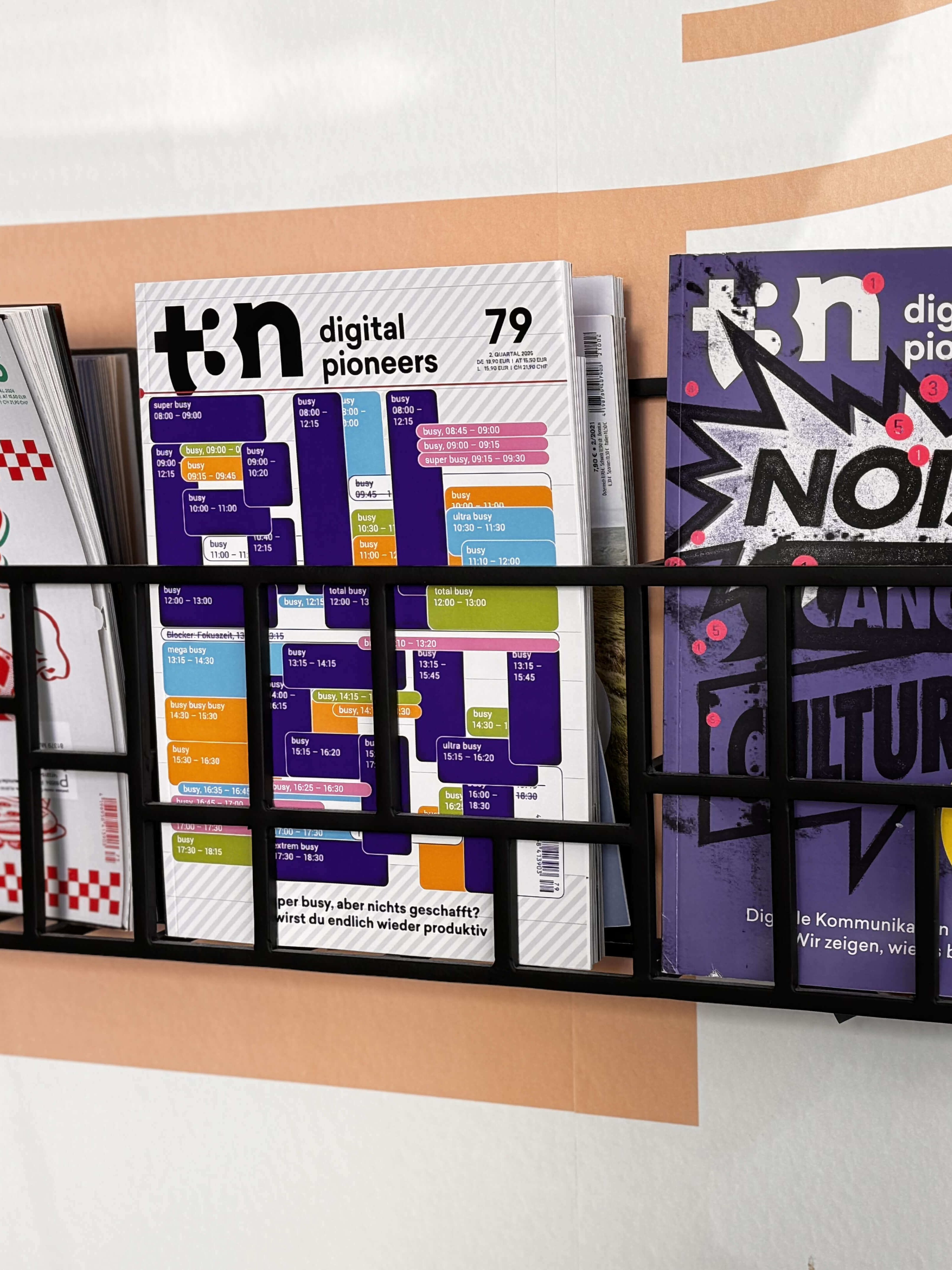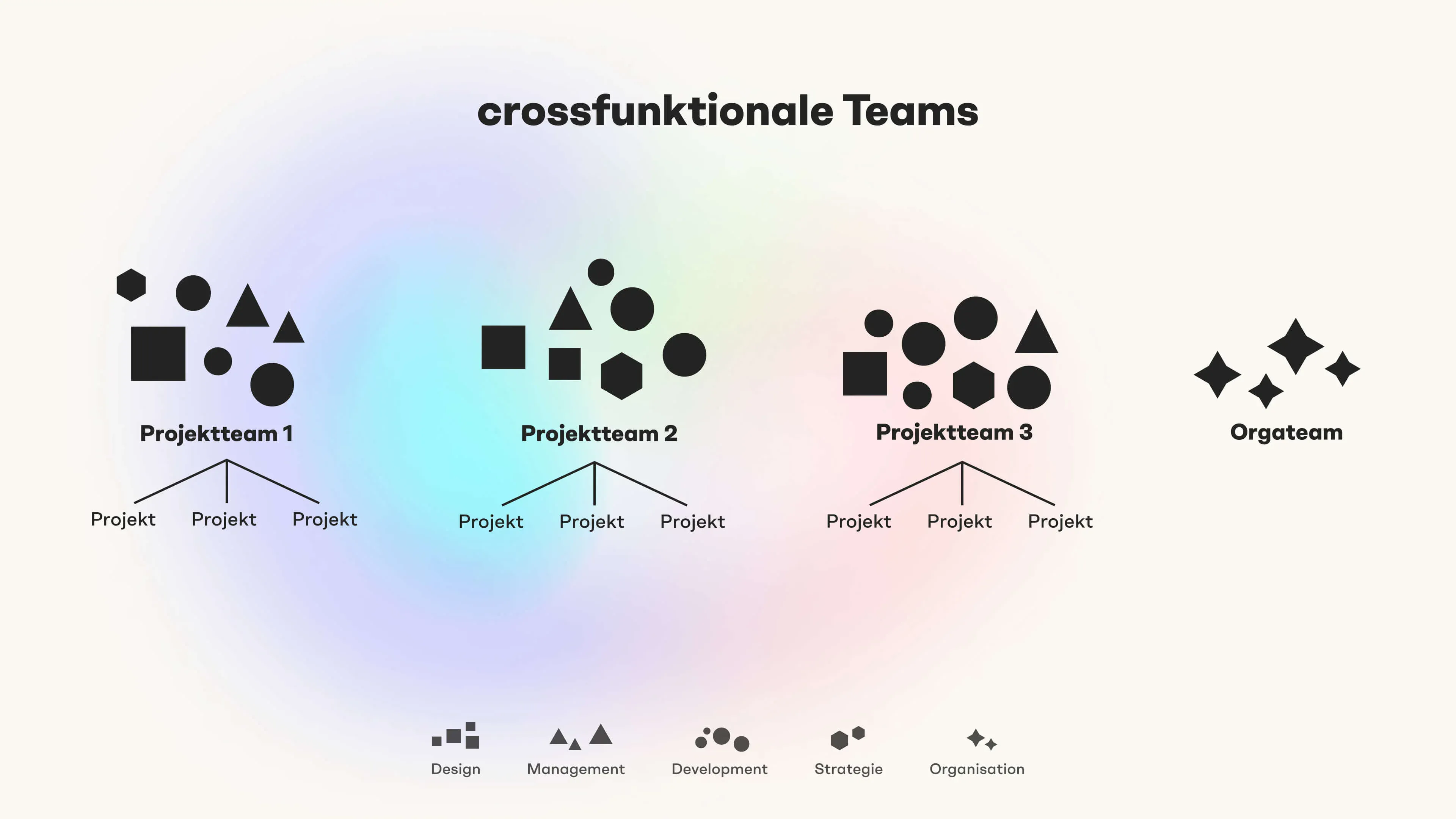t3n: Better agile collaboration step by step

Summary
In small companies in particular, the challenge often lies in creating clear responsibilities, structures and processes without losing flexibility and dynamism. This is where new structures in combination with agile methods can help. One step in this direction is the establishment of cross-functional teams that work independently and self-organised with customers and products.
Cross-functional teams are the key:
We rely on agile, cross-functional teams that combine various disciplines such as strategic consulting, project management, UX/UI design and development. This structure ensures that all relevant skills are directly available in the team and dependencies are minimised.
Clear processes create efficiency:
An agile framework with defined processes such as Scrum or Kanban helps us to work efficiently and flexibly. Clear role allocations and standardised processes enable our teams to act independently.


Focus on employee development:
The exchange of knowledge and regular further training not only promote professional expertise, but also strengthen the motivation and personal responsibility of team members.
Customer proximity as a success factor:
Agile teams enable us to react more flexibly and quickly to customer requirements. A clear product and customer affiliation ensures a better understanding of needs and creates trust.
Conclusion: More flexibility and efficiency
Although the switch to agile teams requires a great deal of commitment and a willingness to change, it creates the basis for sustainable success. We have seen how clear structures and trusting collaboration increase efficiency and boost the satisfaction of our customers and employees. You can find the full article in the current issue of t3n magazine.
Interested?
Do you have experience with the expansion of agile, interdisciplinary teams, are you currently planning a reorganisation or do you have questions or suggestions on this topic? Then get in touch with us, we look forward to exchanging ideas with you!
